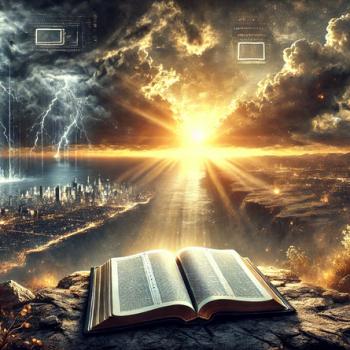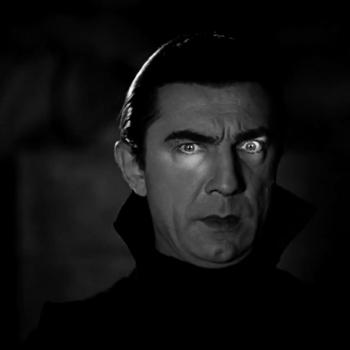Editors' Note: This article is part of the Public Square 2014 Summer Series: Conversations on Religious Trends. Read other perspectives from the Spirituality community here.
Hegel said, "To supersede is at once to negate and to preserve." A little more straightforward version of that truth is that each evolutionary stage of transformation "transcends and includes" ("negates and preserves") its predecessors. Thus, in the evolutionary sequence, moving from atoms to molecules to cells to organisms, molecules "negate" or "transcend" (or go beyond) atoms, but they also "include" (or "preserve") atoms in their makeup. Likewise, cells "negate" or "transcend" (or go beyond) molecules, but also "include" them in their very makeup. And similarly, organisms negate or transcend cells, but also preserve and include them in their own being. Each higher stage becomes more and more complex, but also more and more unified, fuller, more whole, with more of what Whitehead called "prehension" (or proto-awareness). Thus, the overall evolutionary process is a spectrum of increasing complexity, wholeness, and consciousness.
This process continues when humans emerge. Of the dozens of developmental models that have been proposed to account for the basic stages of human growth and development and evolution, what's so amazing is that virtually all of them agree on the same basic six to eight stages of human growth, which is continuing in an ongoing fashion today. Some of the models are more detailed, with up to sixteen or more stages; others are more succinct, with only four or five stages, but even those are easily seen as variations on these same six to eight major stages, which show up time and time again. Using a slight variation of Jean Geber's terms for these stages, they are Archaic, Magic, Mythic, Rational, Pluralistic, Integral, and Transpersonal/Unitive. Each of those, like all other evolutionary stages thus far, is increasingly more complex, more unified, more whole, and possesses a greater degree of consciousness (running from subconscious to self-conscious to superconscious).
A simplified version of that evolutionary scale points out that a human being's identity evolves from egocentric (an individual identified only with him- or herself), to ethnocentric (where identity expands from the self to a group or groups—a clan, tribe, nation, religion, political party, etc.), to worldcentric (identity continues to expand, switching from a group or handful of groups to all groups universally, a solidarity with all humans, regardless of race, color, sex, or creed), to Kosmocentric (identified not just with all humans, but with all sentient beings, with Life or Spirit itself). It is this last stage in both of those sequences—the transpersonal, the Spiritual, the nondual unity consciousness—that clearly takes on religious or spiritual dimensions, and begins to suggest that evolution itself, when looked at in its overall dynamic, is Spirit-in-action, or the very means and modes of Spirit's creation of a manifest world.
What is happening today is indeed a "thinning of the Veil" between human and Divine, leading, it certainly appears, toward what the Sufis call "the Supreme Identity"—the identity between a human soul and a divine God in a yet deeper or higher Godhead, an Ayin (pure Emptiness) united with all Form to give Ein Sof (nondual unity or "Oneness"), what the Buddhists call the "union of Emptiness and Form," or Freedom and Fullness.
The difference between this view and the earlier Great Religions is that most of those Traditions were at the Mythic stage of human development when they first emerged, what James Fowler specifically identified as "Mythic-literal" (in his version of the same six to eight stages as they show up in the development of human Faith), so-named because the myths are taken as literally and absolutely true (e.g., Moses really did part the Red Sea, Lao Tzu really was nine hundred years old when he was born, the earth really is flat and is resting on a serpent resting on an elephant resting on a turtle, Krishna really did make love to hundreds, even thousands, of cow maidens, and so on). All of these were pre-rational (pre-scientific, premodern, etc.). This is contrasted to more recent, evolutionary unfolding—of Integral and Transpersonal Unity states—which are moving to trans-rational states (as always, transcending and including reason).
Another important item about these stages of human development is that, once a stage has emerged, it stays in existence and unfolds in the same order as it did originally in its evolutionary emergence. Thus, in today's world, all infants are born at Archaic (0-1 yrs), then move to Magic (1-3 yrs), then on to Magic-Mythic (3-7 yrs), then to Mythic proper (7-12 yrs), then Rational (during adolescence), and—if development continues (it can basically slow or stop at any stage)—to the emergence of Pluralistic, Integral, and Transpersonal/Unitive stages (which are rare in the population now but are slowly increasing). The Western Enlightenment marked the emergence of Rationality (and science, modernity, etc.) on a wide scale; the revolutions of the sixties saw the emergence of Pluralism on a large cultural scale (the multiculturalism movement, "postmodernism"); and the recent moves into globalization mark a strong emergence of world-centric Integral stages, with Transpersonal stages confined, at present, to a small but growing minority.




